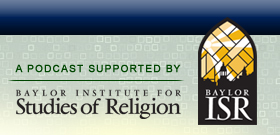

|
Ann Wainscott on the Politics of Islam in Morocco  Date: June 16th, 2013
 The rise of political Islam over the past several decades has become a topic of great interest to scholars and policymakers recently. Numerous explanations for its rise abound, several of which have been covered on our podcast previously (see “related podcasts” below). To advance another piece of the puzzle, Ann Wainscott, a graduate student in political science at the University of Florida, joins us to discuss some of her fascinating research on this topic. She traces the emergence of a Salafi Islamist movement in Morocco, in part, to educational reforms advanced several decades ago with the ostensible purpose of dissipating growing leftist influence among students and intellectuals. Ironically, the unintended consequence of this policy was to provide a new space of resistance to political dissidents. We begin our discussion with a rather vivid story about a knife fight occuring at the school Ann was attending in Fez several years ago. While not personally witnessing the events, her interaction with her Arabic instructor provided a deep insight into some trends in Moroccan society that she had only vaguely been aware of. This new insight allows her to think more broadly about her dissertation research that was, at first, narrowly focused on a set of recent educational reforms. We then step back to review the history of Morocco over the past half century, beginning with the independence movement shortly after World War II. Ann reviews for us a series of key events all situated in the context of the Cold War. With Morocco being considered a geopolitical significant country, both domestic and international pressure to control any growing socialist influence is consider an imperative in Moroccan policymaking circles. With King Hasan II seeing religion as a mobilizing resource to gain support amongst the population and stave off political challengers, he embarks on a series of reforms to introduce Islam more deeply into the public school curriculum. This effort emerges most strongly in the aftermath of the 1965 Casablanca riots that involved high school and college students. Ann then explains the nature and content of these educational reforms, noting that in an authoritarian context, every aspect of society becomes political including education. While initially helping to reduce the influence of left-leaning political opponents of the regime, the Islamization of the curriculum allows political discourse to emerge in a new context. We observe how the king’s regime focused on three important arenas. First, at the institutional level, the regime determined which schools would get funding and which ones would not, obviously having an incentivizing effect on how loyal the leaders of any given school would be to the king. Second, there was a concerted effort to place Islam-friendly leaders in key positions of the educational sytem, from national administrators down to the principals of schools. Over time, this had the effect of seeping down to the teaching staff as well. Finally, there were conscious policies designed to insert Salafi Islam into all aspects of the curriculum, including math and science courses. Ann explains why Salafism was chosen. These three methods were seen as an “Islamic solution” to a growing left-wing threat at the time. The intial effect of these reforms was to “exhaust” the resources of the left, and we see this in how the Moroccan Student Union, an entity started by leftists, comes under the control of Salafists. However, the “Islamic solution” becomes an “Islamist problem” by the late 1980s, as a number of Islamic elites become critical of the ruling regime, now under the control over Mohammed V’s son, King Hasan II. We discuss the response to this “problem” — which Ann is careful to mention is a “problem” from the vantage point of the government. Attempts are made to remove Islamic teachings from the curriculum as well as to introduce a more moderate flavor of Islam into the nation, namely Sufism, via subsidies to key individuals and institutions. With the terrorist attacks of September 11, 2001 and the subsequent bombing of several restaurants in Casablanca in 2003, the regime becomes more alarmed by the growing radicalization of Islam in society and begins to close that space even more. We finish with Ann’s thoughts on how this is all playing out with respect to the region as a whole and where Moroccan society is today. Recorded: May 29, 2013. RELATED LINKS No biographical information currently available for Ann Wainscott. RELATED PODCASTS Nathan Brown on the Muslim Brotherhood. Timur Kuran on Islamic Economics. William Imboden on Religious Liberty, Foreign Policy, and the Arab Spring. Alessandra Gonzalez on Islamic Feminism. Monica Toft on Religion, Terrorism, and Civil War. Sean Everton on Dark Networks. Matthew Derrick on the Geography of the Umma.
One Response to “Ann Wainscott on the Politics of Islam in Morocco”Leave a Reply |
 Search The Podcast
To search the podcast, type a term and click the Search button.
  Browse Podcast Categories
Select a category below to browse the podcast:
   |















[…] Ann Wainscott on the Politics of Islam in Morocco. […]